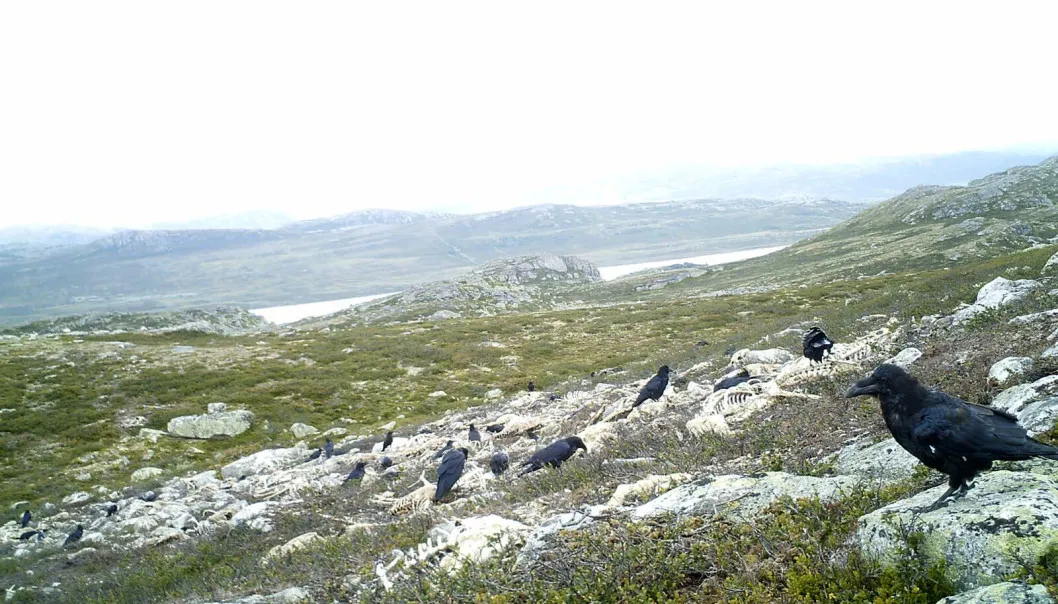What the Deaths of More Than 300 Reindeer Teach Us About the Circle of Life
In an isolated corner of Norwegian plateau, carcasses of reindeer felled by lightning are spawning new plant life
/https://tf-cmsv2-smithsonianmag-media.s3.amazonaws.com/filer/7f/45/7f450719-f0ef-4607-bc15-427f0e3444c8/sam_steyaert.jpg)
About two years ago, Norway’s Hardangervidda National Park—a sprawling nature haven located on Europe’s largest mountain plateau—was caught in the throes of a thunderstorm. In a remote corner of the park, 323 wild reindeer huddled together, seeking warmth and comfort as the storm raged around them. Suddenly, lightning struck, essentially electrifying the ground and triggering instantaneous cardiac arrest amongst the unsuspecting animals.
Today, the reindeer’s rotting carcasses still litter the landscape of Hardangervidda. Aside from removing the animals’ heads in order to screen for disease, local authorities left the scene largely untouched, allowing nature to run its course. Now, Steph Yin reports for The New York Times, scientists believe the ravaged patch of land may be witnessing the beginnings of a biological renaissance as tragedy yields the promise of new (plant) life.
The Norwegian team’s research, newly detailed in Biology Letters, revolves around the decomposing carcasses, which attracted scavengers that defecated all over the site, spreading seed-filled feces that may eventually sprout into plant seedlings.
“From death comes life,” lead author Sam Steyaert, a biologist at the University of South-Eastern Norway and the Norwegian University of Life Sciences, tells Yin.
In the months following the lightning strike, Steyaert and colleagues launched a project entitled REINCAR—shorthand for “reindeer carcasses,” as well as the first part of the word “reincarnation.” According to a video teaser released by the team, REINCAR’s initial objective was to “better understand ecological change in fragile alpine tundra.”

The scientists set up cameras around the Hardangervidda site, recording the array of scavenging wildlife that came to feast on the reindeer cadavers. Avian visitors included ravens, crows, eagles, buzzards and smaller birds. Foxes and wolverines also frequented the pseudo-graveyard, dining on rotting flesh that seeped “all kinds of juice—and thousands and thousands of maggots, of course,” according to Steyaert.
Ingrid Spilde of Norwegian news outlet Forskning.no reports that the carcasses initially eliminated all plant life in the area, upping ground acidity and tinkering with soil nutrients. As scavenging foxes and birds deposited feces across the patch of land, however, they left crowberry seeds that may be capable of transforming into seedlings.
The crowberry plant serves as a keystone species in the alpine tundra, Yin writes. Its black or dark purple berries are an essential food source for many Arctic animals and have a strong influence on the region’s ecosystem.
In order to germinate, the crowberry plant requires bare, nutrient-dense soil—“exactly what the carcasses are creating,” Steyaert tells Yin.
According to Live Science’s Yasemin Saplakoglu, the carcass-ridden environment and its hordes of seed-dispersing scavengers provide ideal breeding grounds for new plant life. In fact, 21 out of 24 fecal samples described in the study contained viable crowberry seeds. During a recent visit to the site, researchers spotted a promising change in the landscape: crowberry seedlings and grasses popping up amongst the reindeer’s scattered remains, presenting a unique meditation on death—and, for the first time in two years, life.
/https://tf-cmsv2-smithsonianmag-media.s3.amazonaws.com/accounts/headshot/mellon.png)
/https://tf-cmsv2-smithsonianmag-media.s3.amazonaws.com/accounts/headshot/mellon.png)